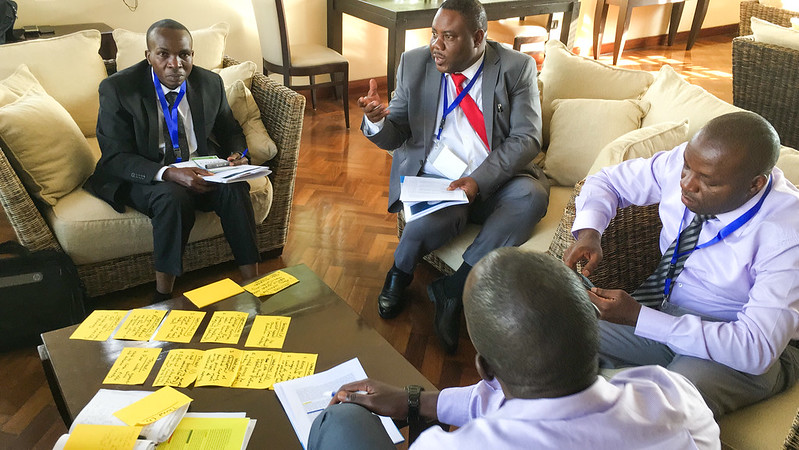
Solutions for a water secure East Africa in 2050
The IIASA Water Futures and Solutions Initiative seeks to incorporate science into water policy and planning, and applied water management issues. Set up as an interdisciplinary scientific initiative, the project identifies and tests solution pathways across different economic sectors, including agriculture, energy, and industry, while safeguarding the environment.
The Water Futures and Solutions Initiative engages with stakeholders from across the globe to support and codesign future development scenarios and possible options for the management of water resources. It provides important input that support mid- to long-term water management and planning based on informed decision making. After a global analysis undertaken in a first fast-track assessment, the initiative is now focusing on Eastern Africa with the Lake Victoria basin as a key research area. With funding from the Austrian Development Agency, the Water Futures and Solutions Initiative formed an East Africa node. This corresponds with one of the priority regions of Austria’s development cooperation policy.
Key actors of the Lake Victoria basin like the Lake Victoria Basin Commission and its member countries, the Nile Basin Initiative, and the Global Water Partnership, among others, expressed interest to engage in mutual learning and participate in model development and the co-creation of scenarios of future water demand and regional water management options. Regional stakeholders worked with a team of four IIASA staff members to identify priorities, development pathways, and potential for investments and solutions. In light of the above, Uganda in collaboration with IIASA, co-hosted a three-day workshop in Entebbe, Uganda, on the issue of projecting future water demand and water availability in the Lake Victoria basin.
The workshop, which took place in December 2017, attracted more than 50 practitioners engaged in government, academia, business, and civil society in the East African community, to discuss mid- to long-term water resource management options towards 2050. For many of the participants, the workshop presented a first opportunity to discuss systems thinking approaches aimed at understanding future development scenarios and their implications for water management practices.
Each workshop day had a particular focus with highly interactive and engaging discussions triggered by participatory facilitation techniques. The discussions on the opening day revealed a number of key challenges and opportunities concerning the use of modeling to support informed water resource planning decisions. One full day was dedicated to gaining a deeper understanding of development scenarios resulting from the East African community’s vision for 2050. Discussions focused on how water can support development aspirations as an enabler, and how water resources are likely to be adversely affected as a result thereof. The final day of the workshop saw participants building partnerships on boosting modeling and scenario building capacities in the region. This will likely form the basis of future research collaborations and work packages, which will either be implemented in the coming year, or developed into funding proposals.
To this effect, a joint funding proposal involving interested partners from East African academic institutions, which was collaboratively developed between the Lake Victoria Basin Commission, Uganda and IIASA, will be elaborated and submitted to a range of development partners already engaged in transboundary water management issues in the region. This could be of significant interest to a range of other IIASA member countries apart from Austria, who have similar priorities and interests.
IIASA Contributors
Further information
Other highlights
Top image © Robert Burtscher | IIASA





